
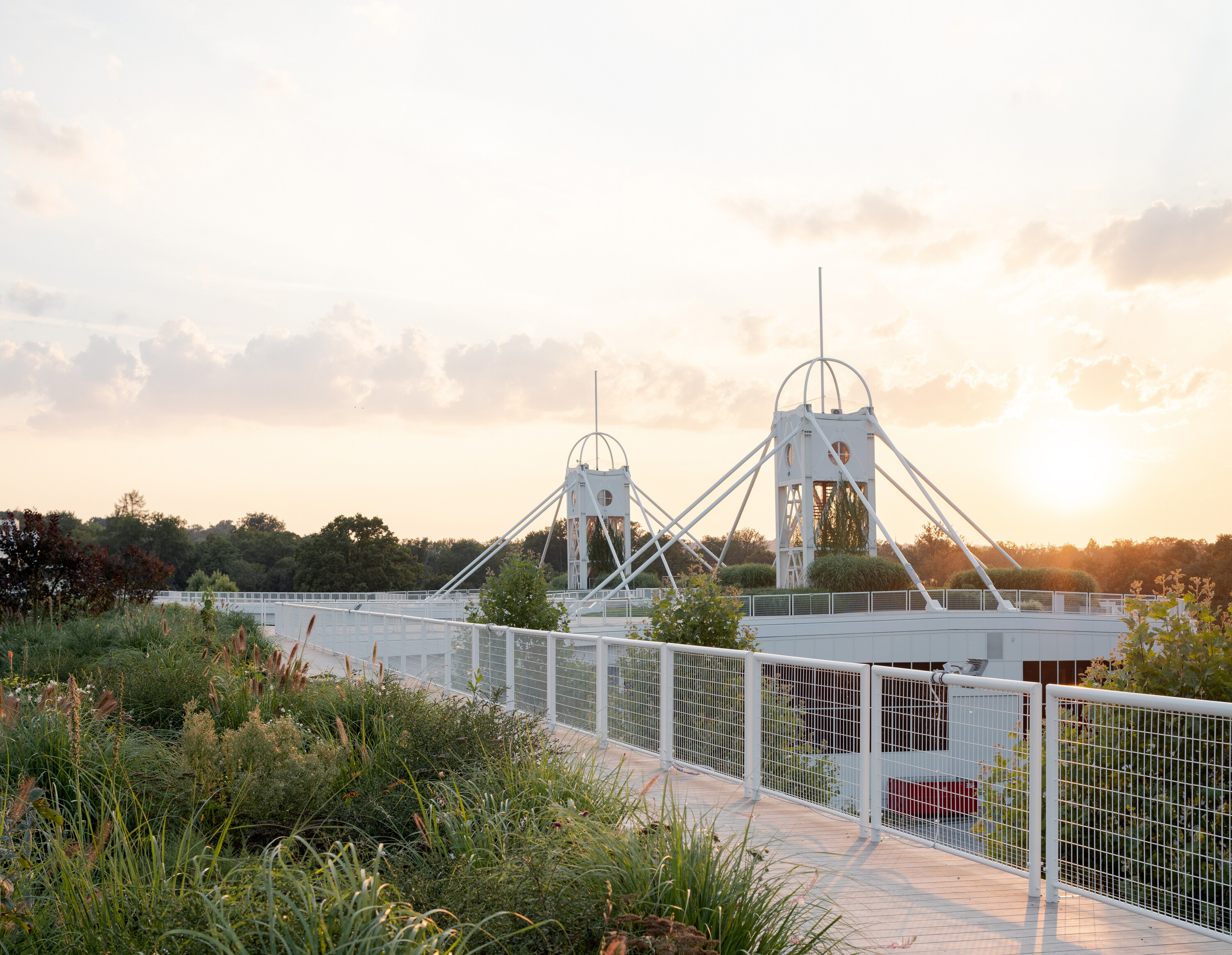
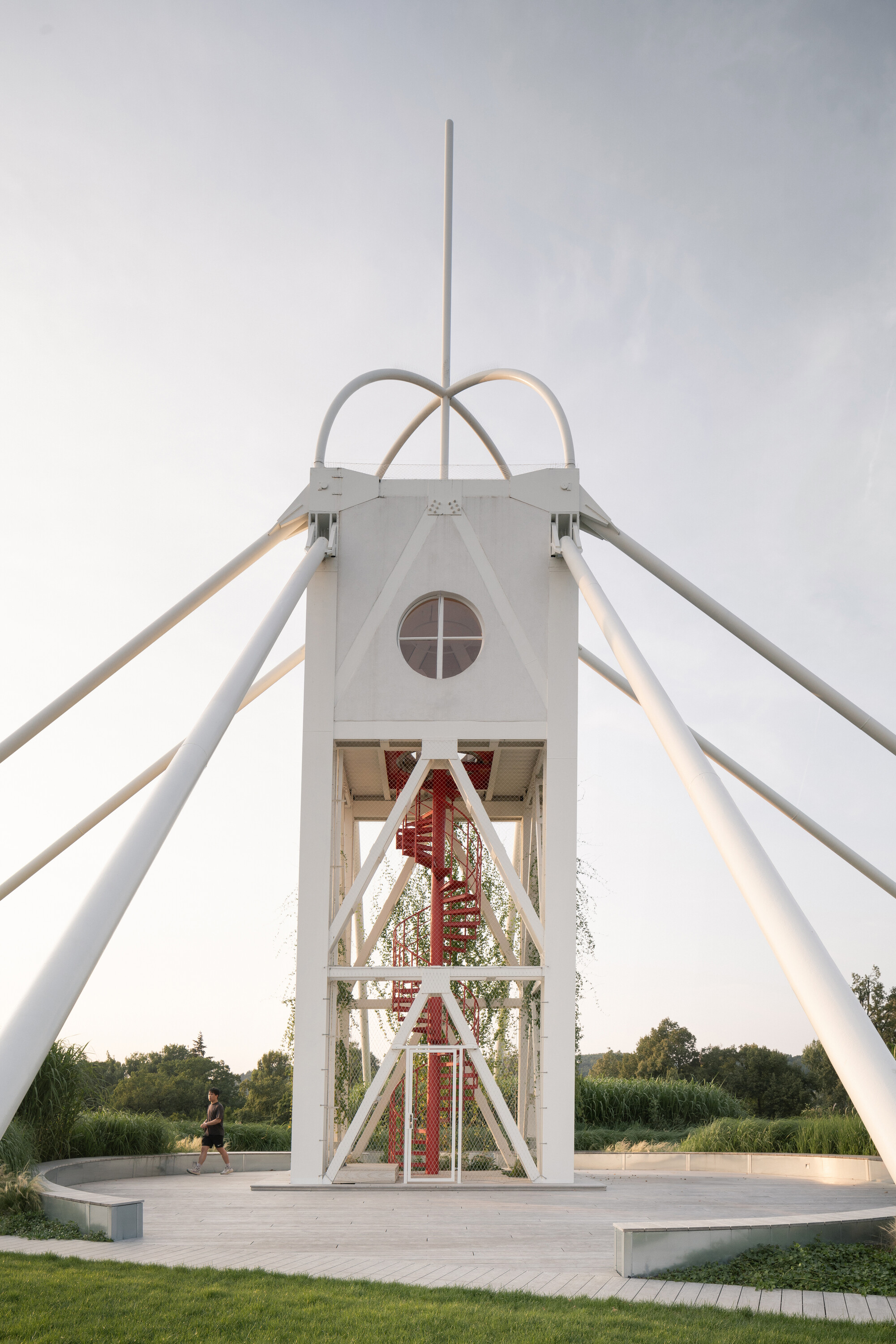
设计单位 布拉格展览中心(Výstaviště Praha)
项目地点 捷克布拉格
建成时间 2024年
建筑面积 7575平方米
本文英文原文由Výstaviště Praha提供,由有方编译。
Křižík展馆建于1991年,由建筑师Michal Brix设计,是为纪念1891年捷克布拉格百年纪念博览会一百周年而建。
The Křižík Pavilions, built in 1991 according to a design by architect Michal Brix, were built on the occasion of the centenary of the Provincial Jubilee Exhibition (1891).


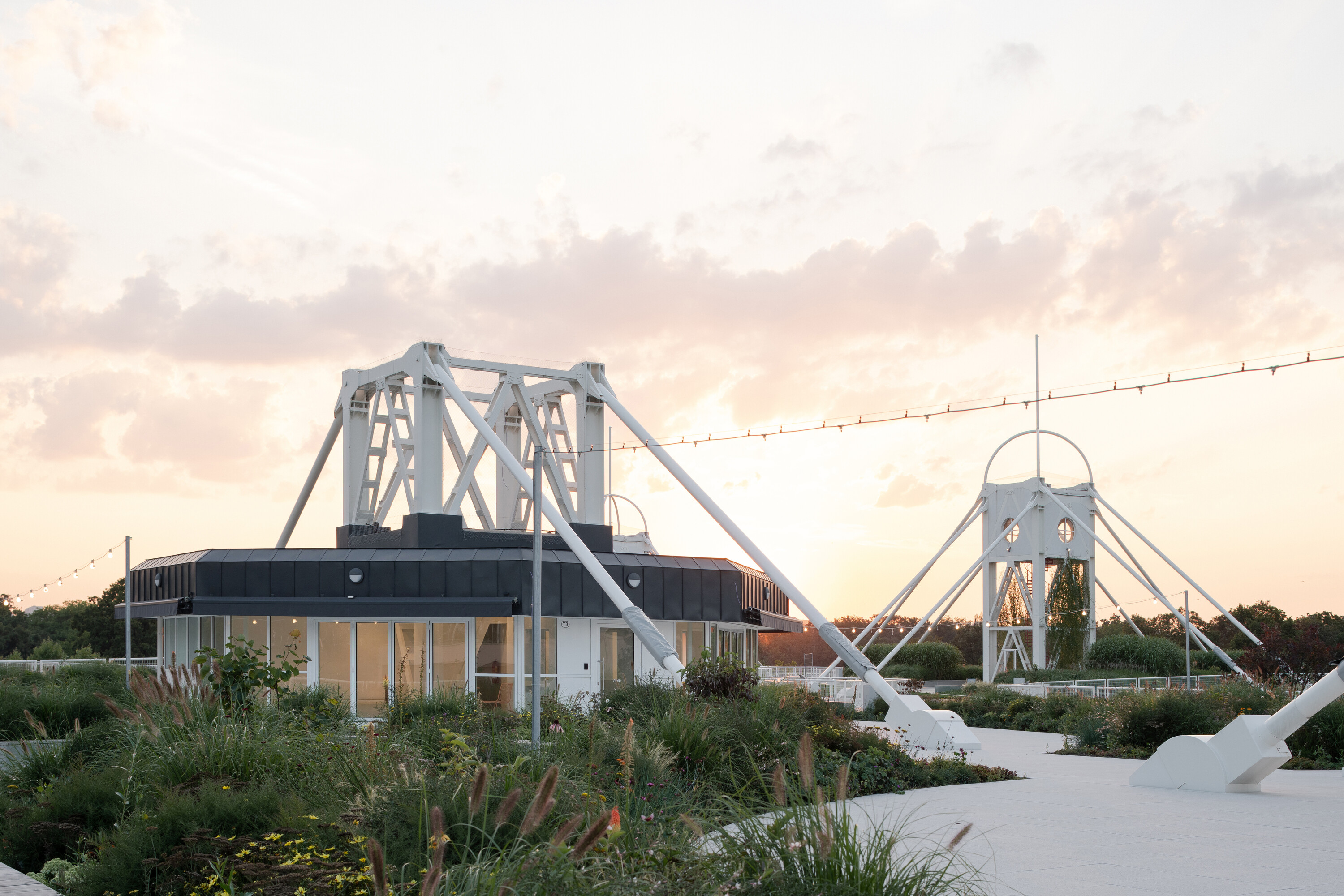
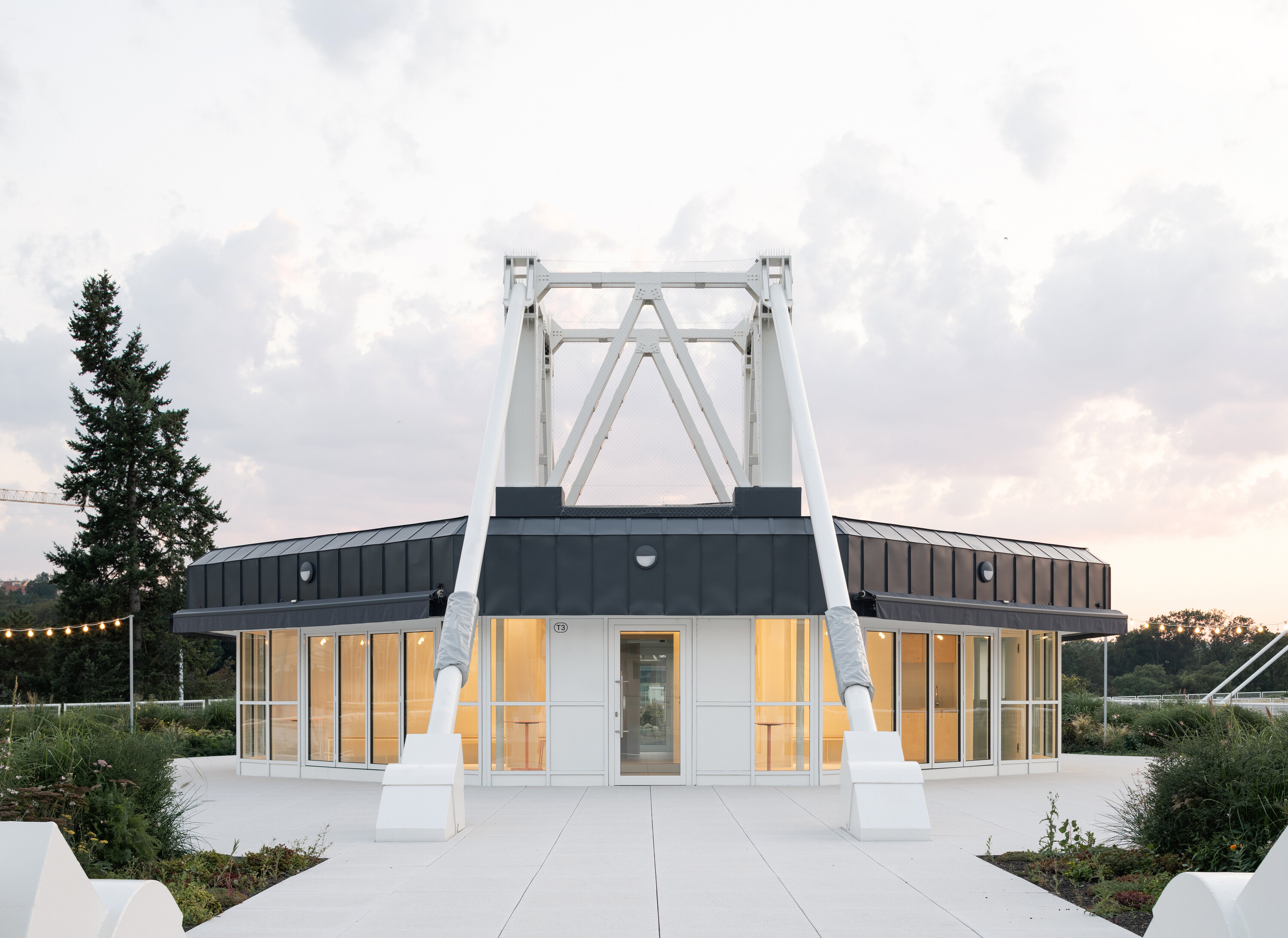
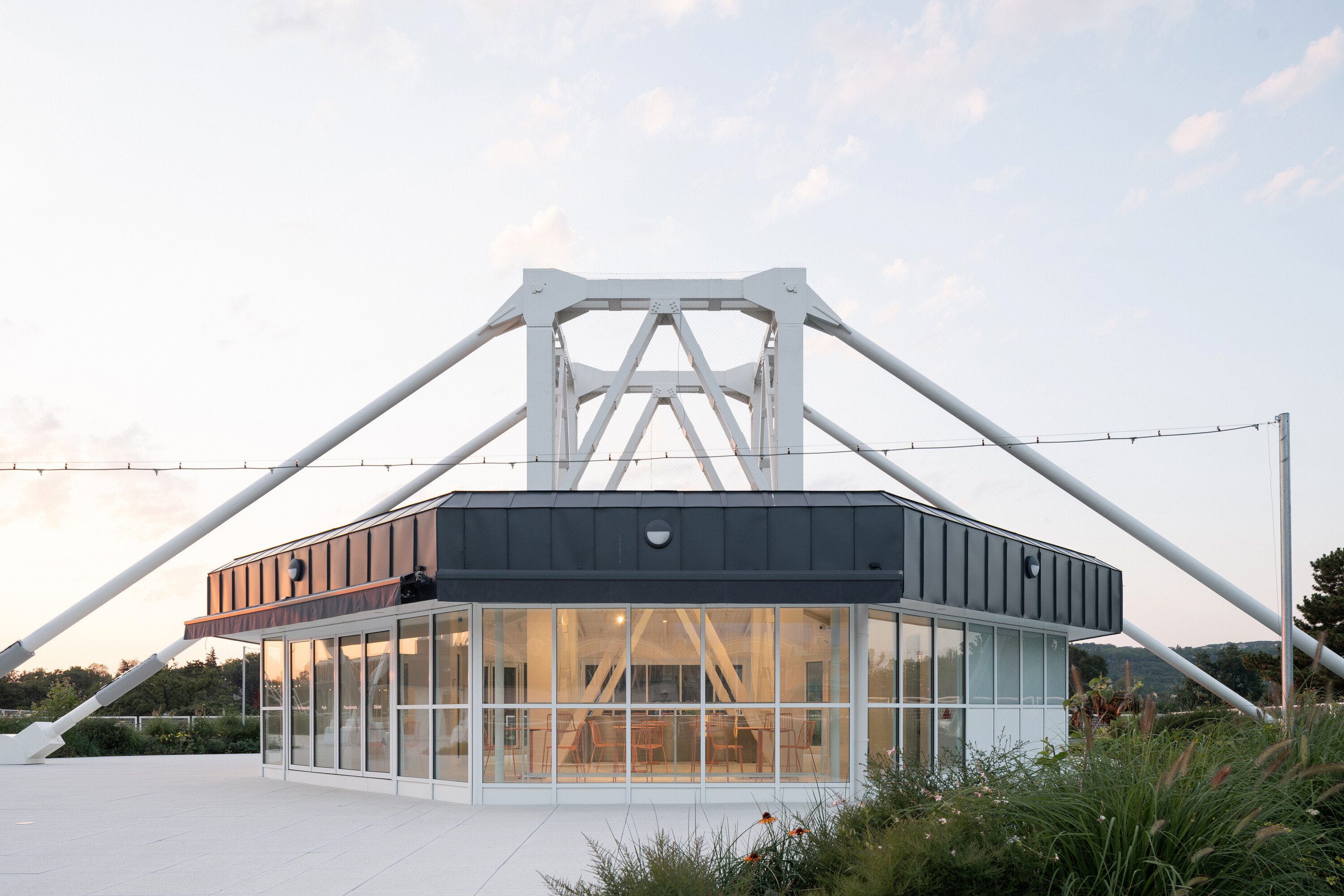
建筑与Křižík喷泉共同构成了工业宫北侧前景的重要组成部分,并突出了整个建筑群的构图轴线。展馆利用地势的自然坡度,将工业宫作为一个明显的视觉背景。展馆最初是为1991年捷克斯洛伐克综合博览会临时建设的,但一直沿用至今。
Together with the Křižík Fountain, they form an important part of the northern foreground of the industrial palace and highlight the compositional axis of the entire complex. The pavilions take advantage of the sloping terrain and place the Industrial Palace as a strong background motif. Originally intended as temporary structures for the 1991 General Czechoslovak Exhibition, they have been used to the present day.


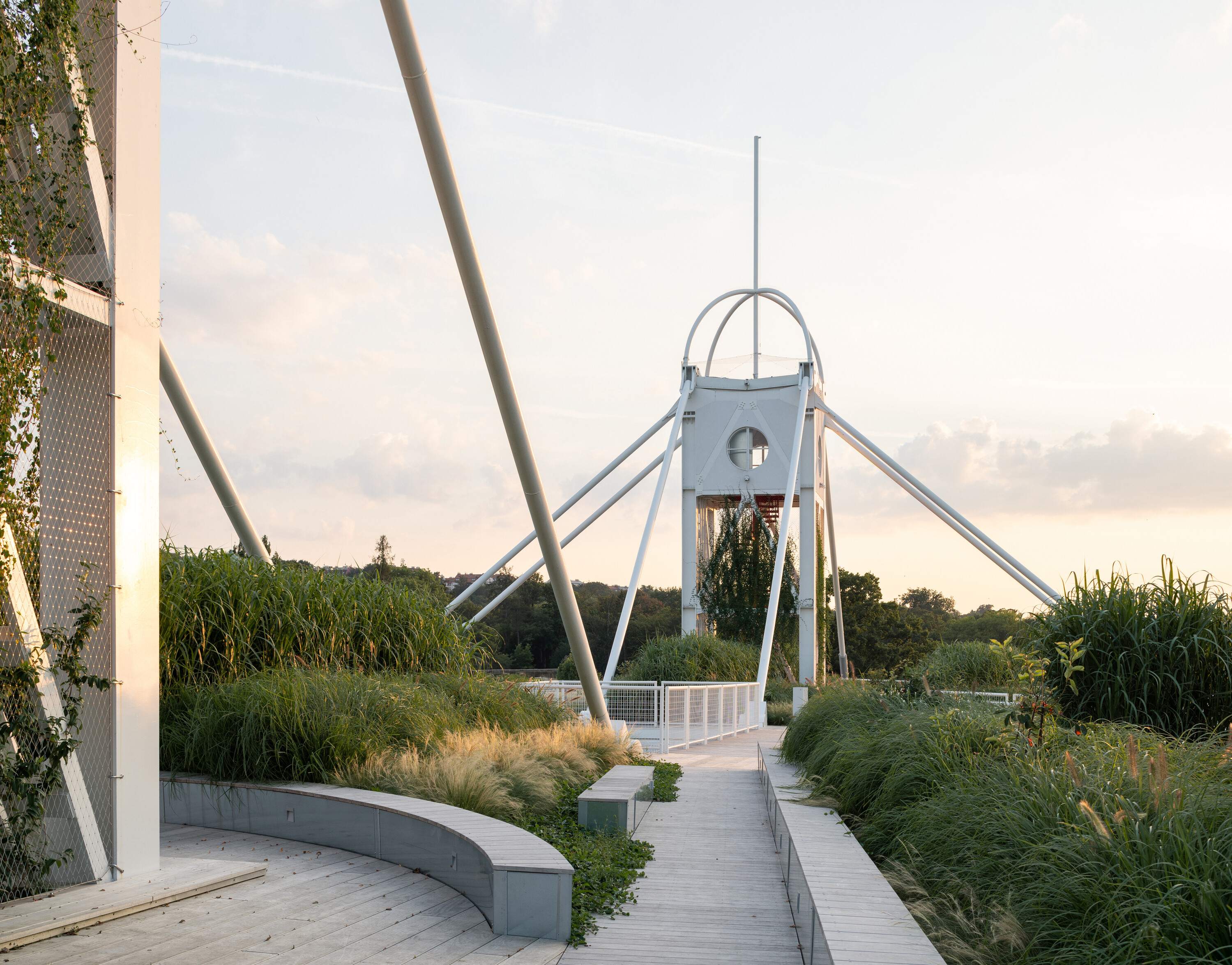
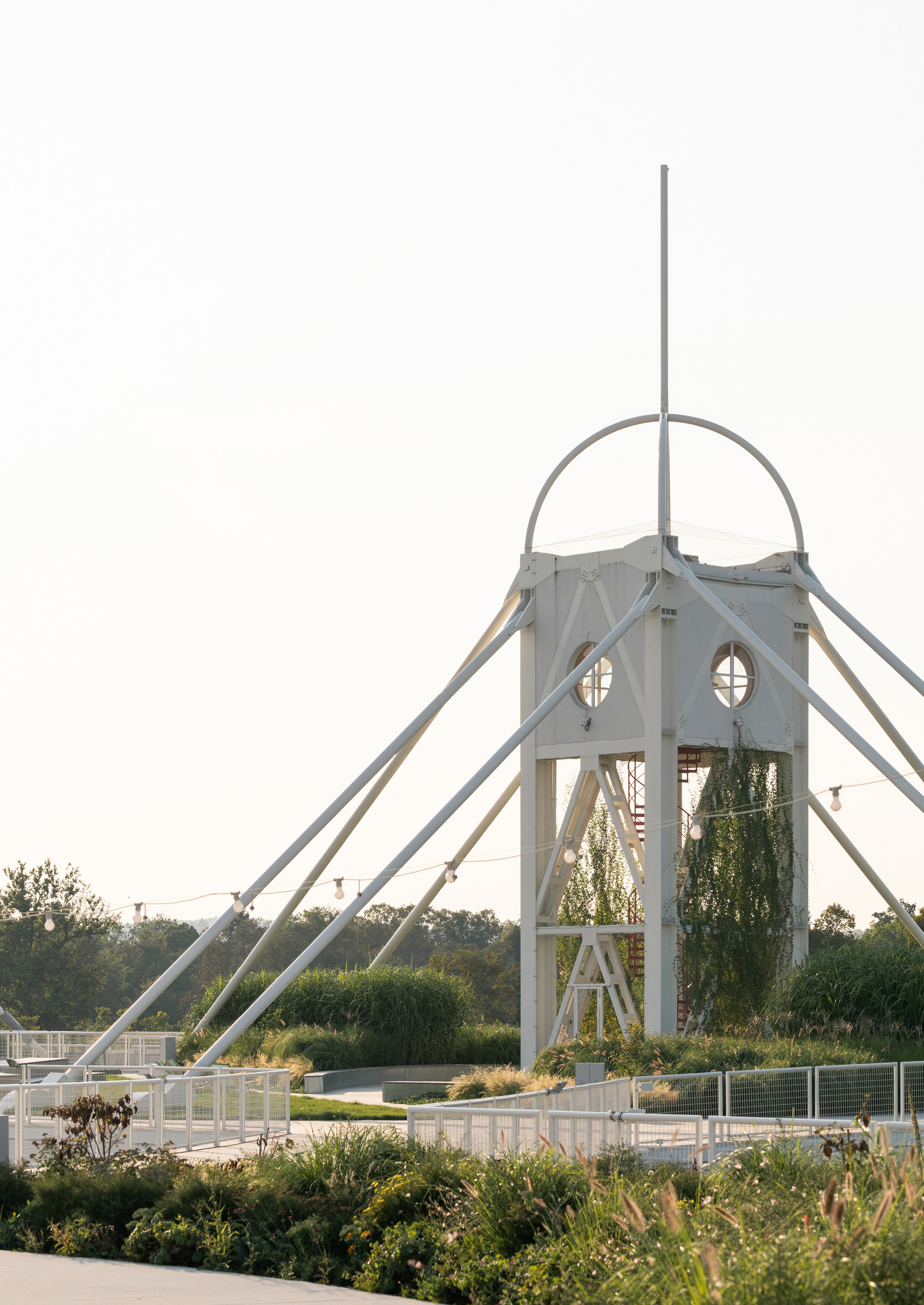
经过三十多年的高频使用,展馆已无法满足当下对展览空间的使用需求。因此,本次改造的目标不仅是对建筑进行技术上的现代化升级,更重要的是赋予其全新的功能,以支持更广泛的使用场景——从展览和博览会,到音乐会、电视节目录制等多种形式。
After more than thirty years of intensive use, the pavilions no longer meet the current requirements for exhibition space. The aim of the revitalization was therefore not only to modernize the buildings technically, but also to give them a new functionality that would cover a wide range of uses. From exhibitions and fairs to concerts and television filming.

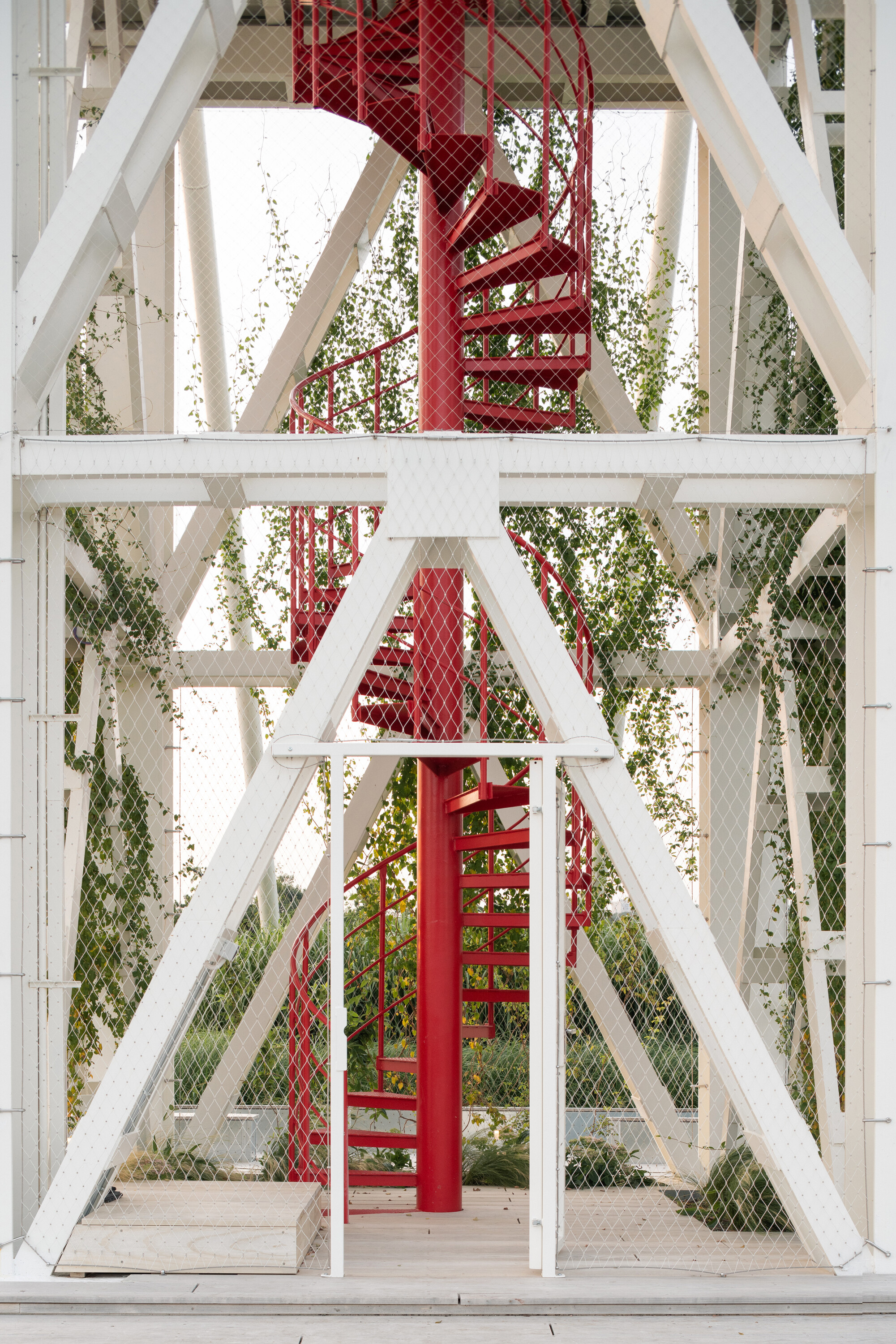
展馆内部经过了重大改造。展厅内部统一采用黑色哑光涂料,让展品本身更为突出。技术设施和卫生区域则选用浅色调,提升空间的辨识度。室内的混凝土结构则保留原始状态,配合不锈钢材质的栏杆、扶手及家具等元素,强化了空间的工业气质和建筑本身的设计理念。
The interior of the pavilions has undergone a significant transformation. The interior of the exhibition pavilions has been given a black matt paint finish, allowing the exhibits to stand out. The technical and sanitary facilities are designed in light tones for better orientation. The concrete structures in the interior are left in their raw form and, together with stainless steel elements such as railings, handrails and furnishings, reinforce the industrial character of the space and the building's design principles.
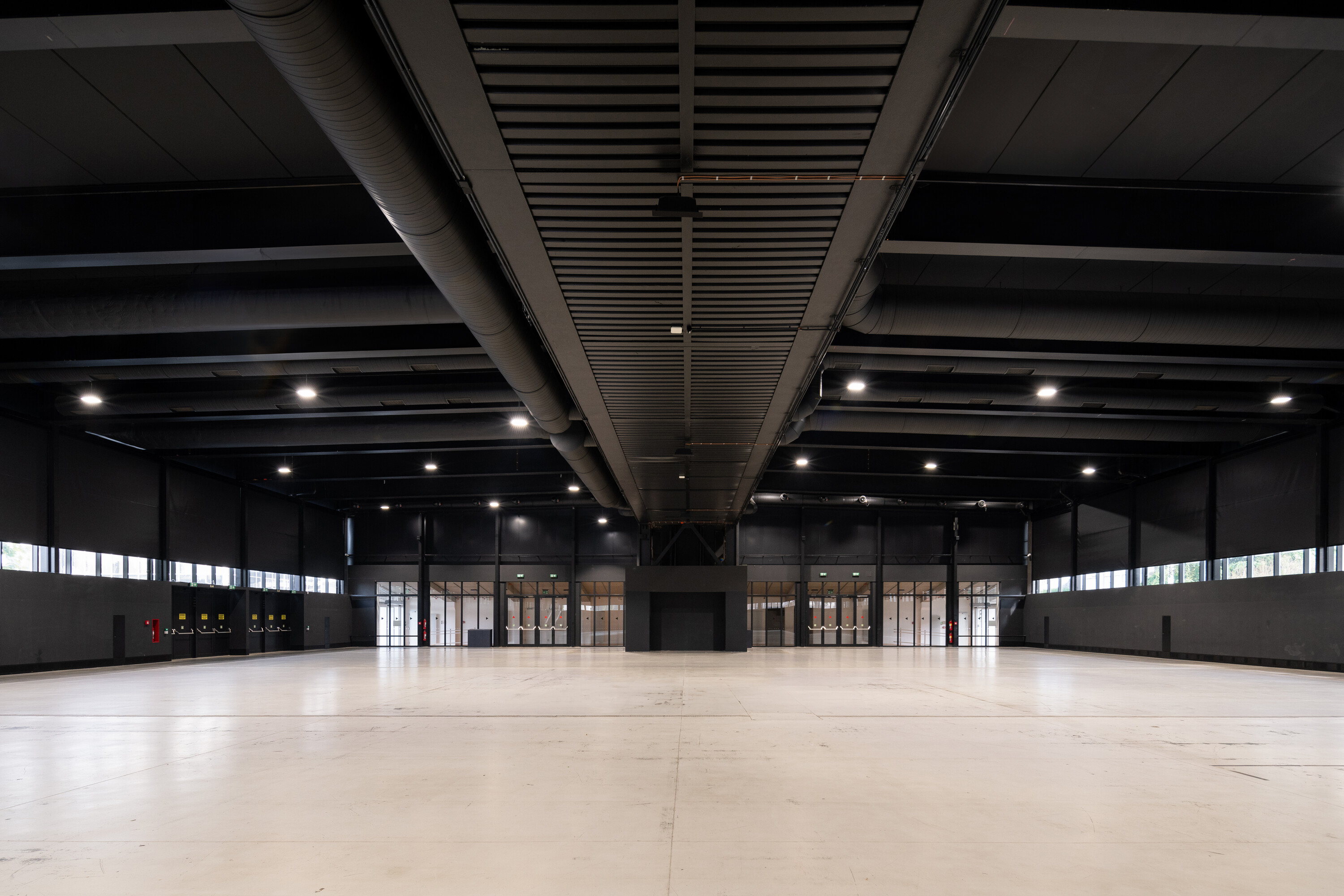


改造中的一项重点是展馆屋顶的全面更新。原本被忽视、空置的混凝土屋面如今被改造成对公众开放的绿色屋顶空间。绿色屋顶回应了当下可持续城市改造的需求,不仅能缓解城市热岛效应,还能优化雨水径流系统。同时,屋顶空间也具备多元功能,可全年使用,兼顾休憩、餐饮、运动及社交等不同活动需求。如今,屋顶设有餐厅、跑道和一些互动娱乐装置,使得该空间成为一个多功能的复合空间。
One of the key elements of the revitalization is the roof, which has been given a completely new character. Originally unused and neglected fully concrete areas have been transformed into active green roofs accessible to the public. This green roof concept responds to the current need for sustainable urban interventions that reduce the heat island effect and improve the runoff balance of rainwater. At the same time, we are creating a space with a diverse function, allowing for year-round use. In addition to rest and relaxation in the green space, we want to enable simple dining as well as sports and social activities. The roof now houses a cafeteria, a running track and play elements that turn the space into a multifunctional place.
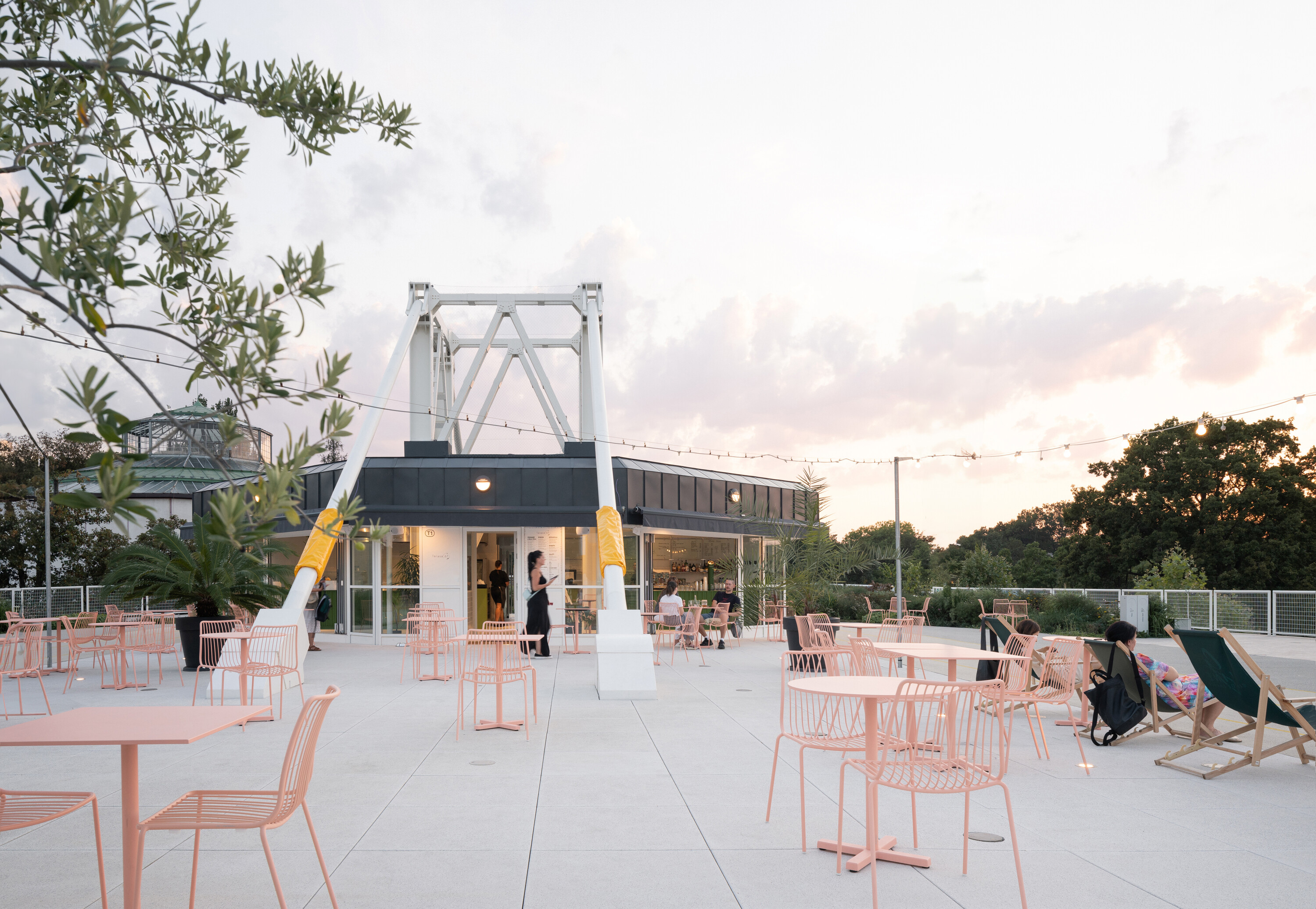

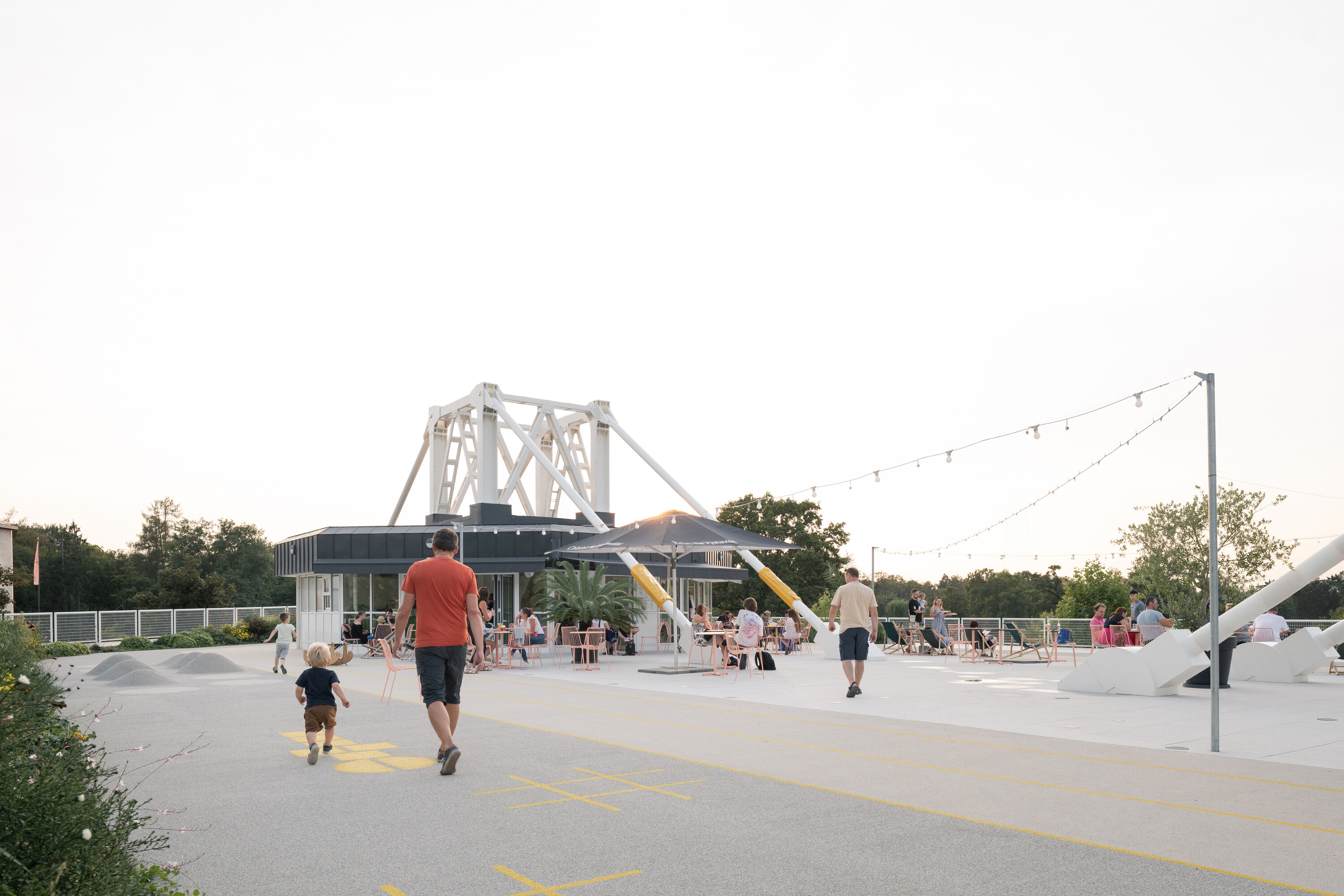

改造前,屋顶完全由深色混凝土铺设,白天吸收大量热能,形成显著的“热岛效应”,使周边温度升高1至3摄氏度(晚间甚至可达10摄氏度)。此次改造共减少了约5000平方米的混凝土覆盖面积。密集种植的绿色植被能够有效减缓空气流动和粉尘扩散,从而明显改善局部气候环境。
Originally, the entire roof surface was made up of dark concrete paving, which absorbed a huge amount of heat during the day, creating a “heat island” effect, raising the temperature of the surrounding area by 1–3°C (in the evening it can be up to 10°C). The total concrete area was reduced by about 5000 m2. The intensive vegetation planted on the roof slows down the movement of air and dust, resulting in a significantly more pleasant local climate.
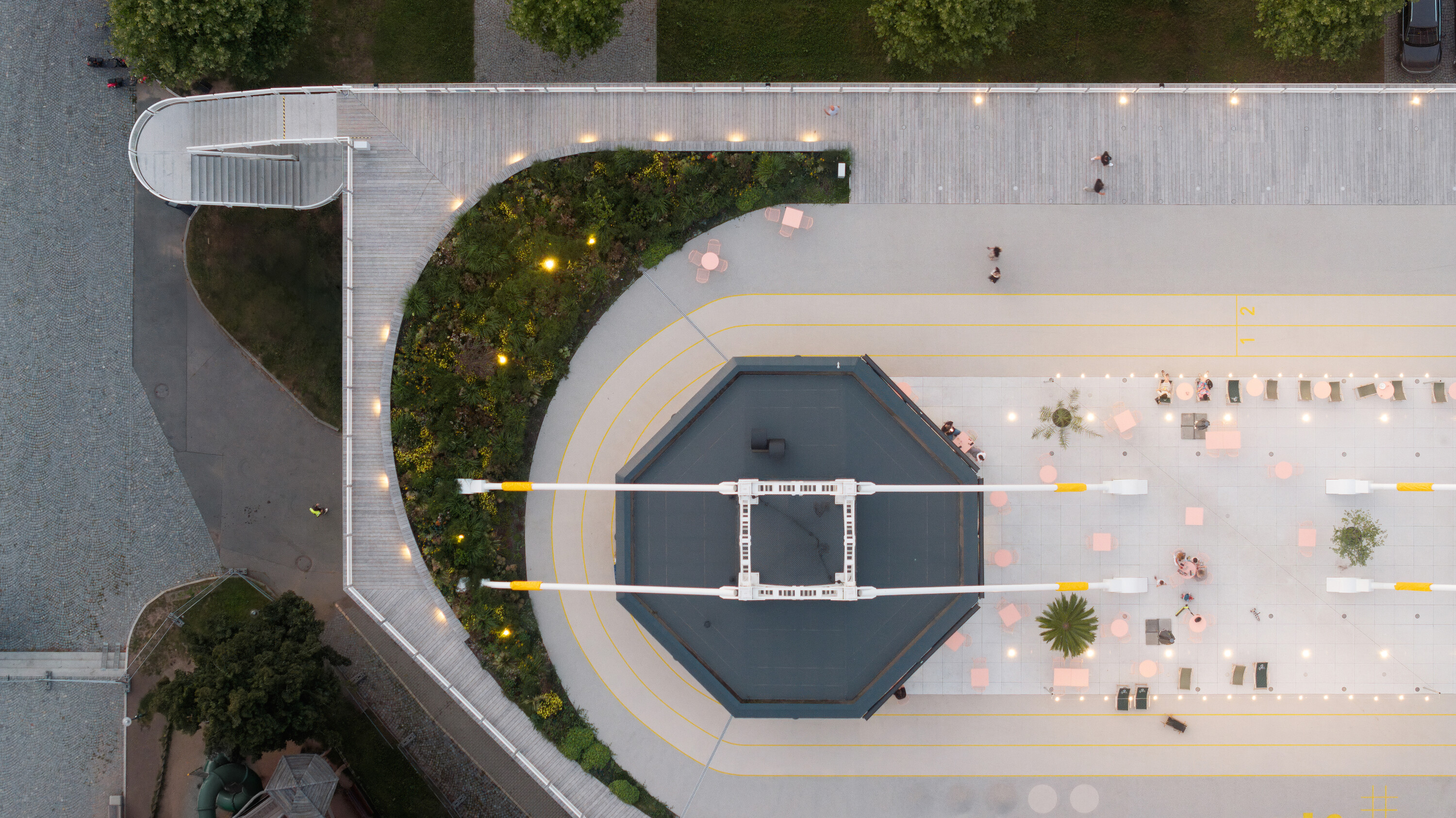



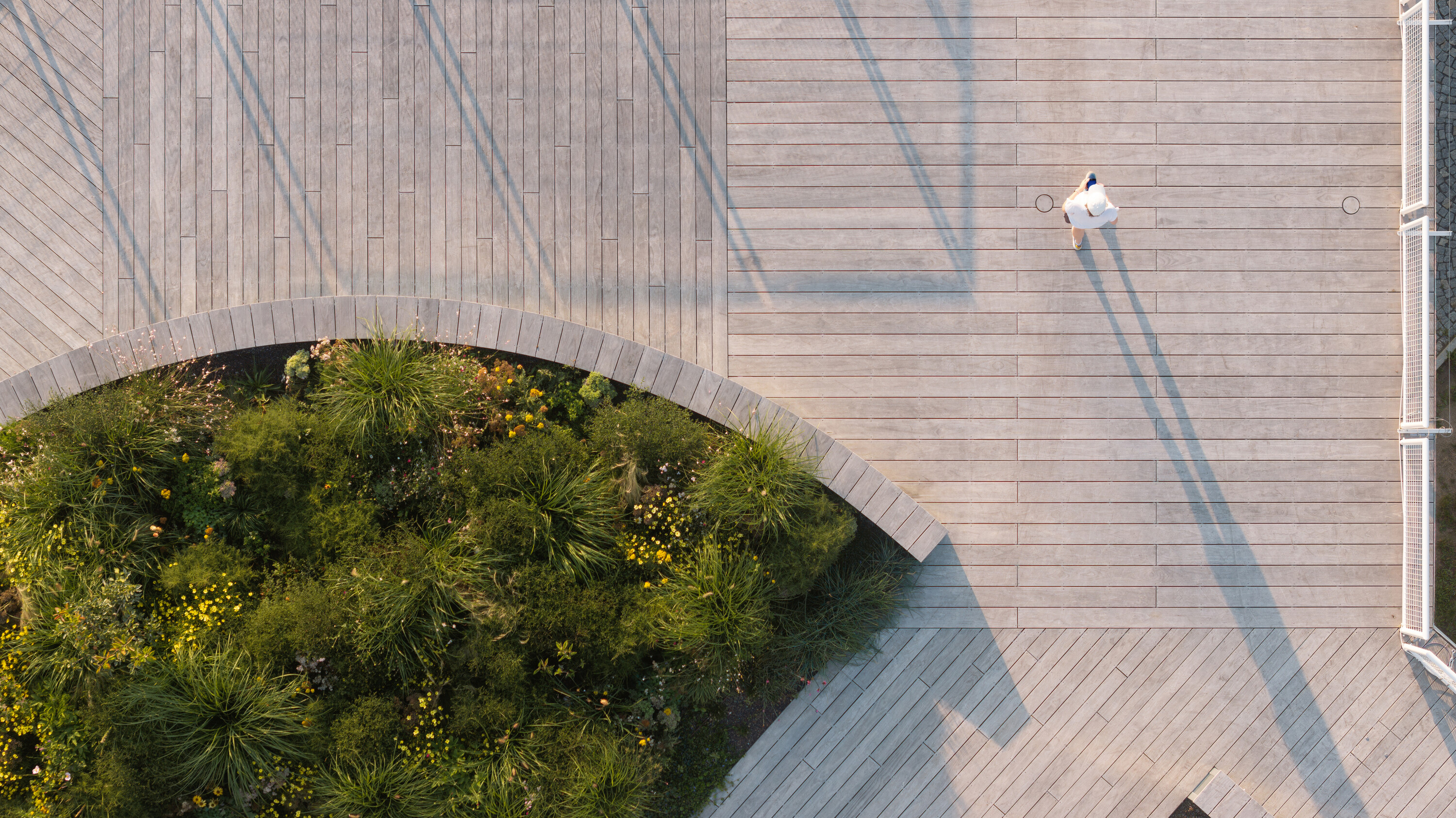
除了增加空气中的含氧量,绿植也提升了空气湿度,整体改善了空气质量。新屋顶采用绿化屋顶与蓄水层和可步行表面结合的结构设计,使得年排入下水系统的雨水量减少约1000立方米。这部分雨水被绿化屋顶层吸收,在后续用于植物生长和自然蒸发。
In addition to oxygenating the air, the greenery also increases the humidity of the air, thus positively influencing its quality. The new layering of the service roof (combination of green intensive roof with accumulation layer and walking surfaces) reduces the amount of storm water discharged to the site sewer by about 1000 m³/year. This amount remains accumulated in the green roof layer during rainfall and is subsequently used for green growth and evaporation from vegetated areas.

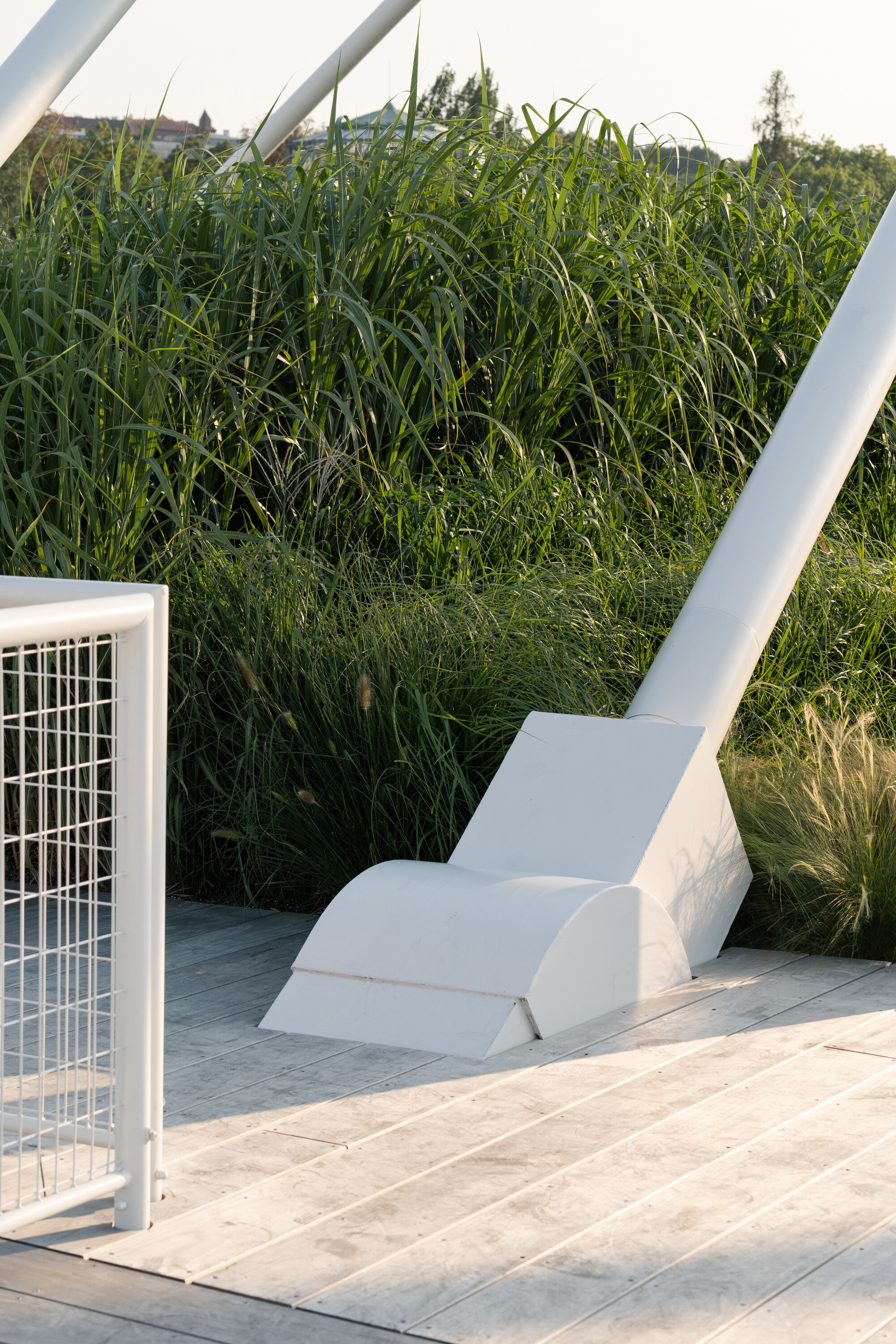
此次Křižík展馆的改造,既保留了历史底蕴,也响应了当前城市空间的需求,最终在布拉格核心地段打造出一处高质量、可灵活使用的多功能空间。
The revitalization of the Křižík Pavilions thus represents a combination of history and modern architecture that responds to the current needs of urban space and offers a high-quality multifunctional use in the heart of Prague.

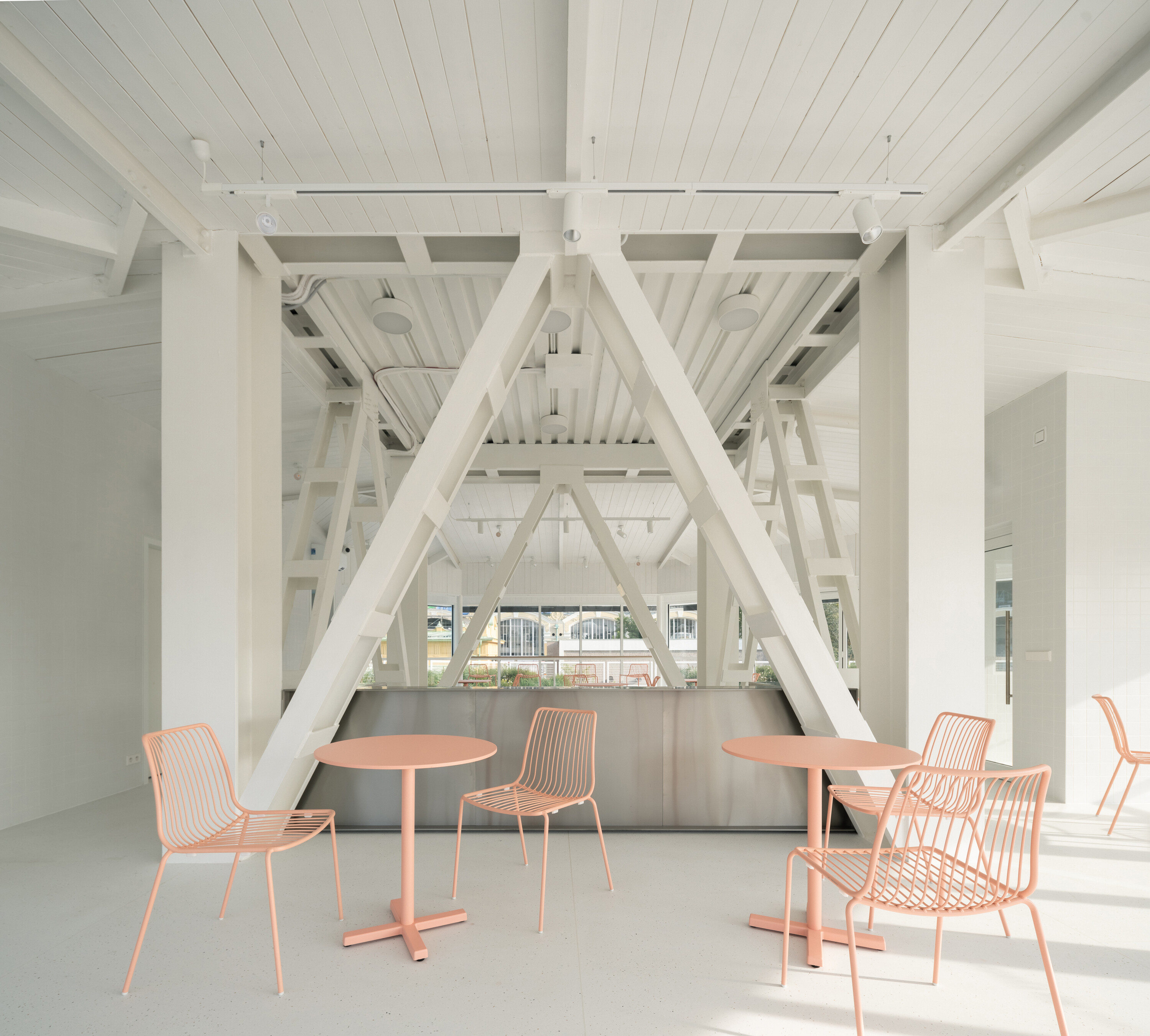
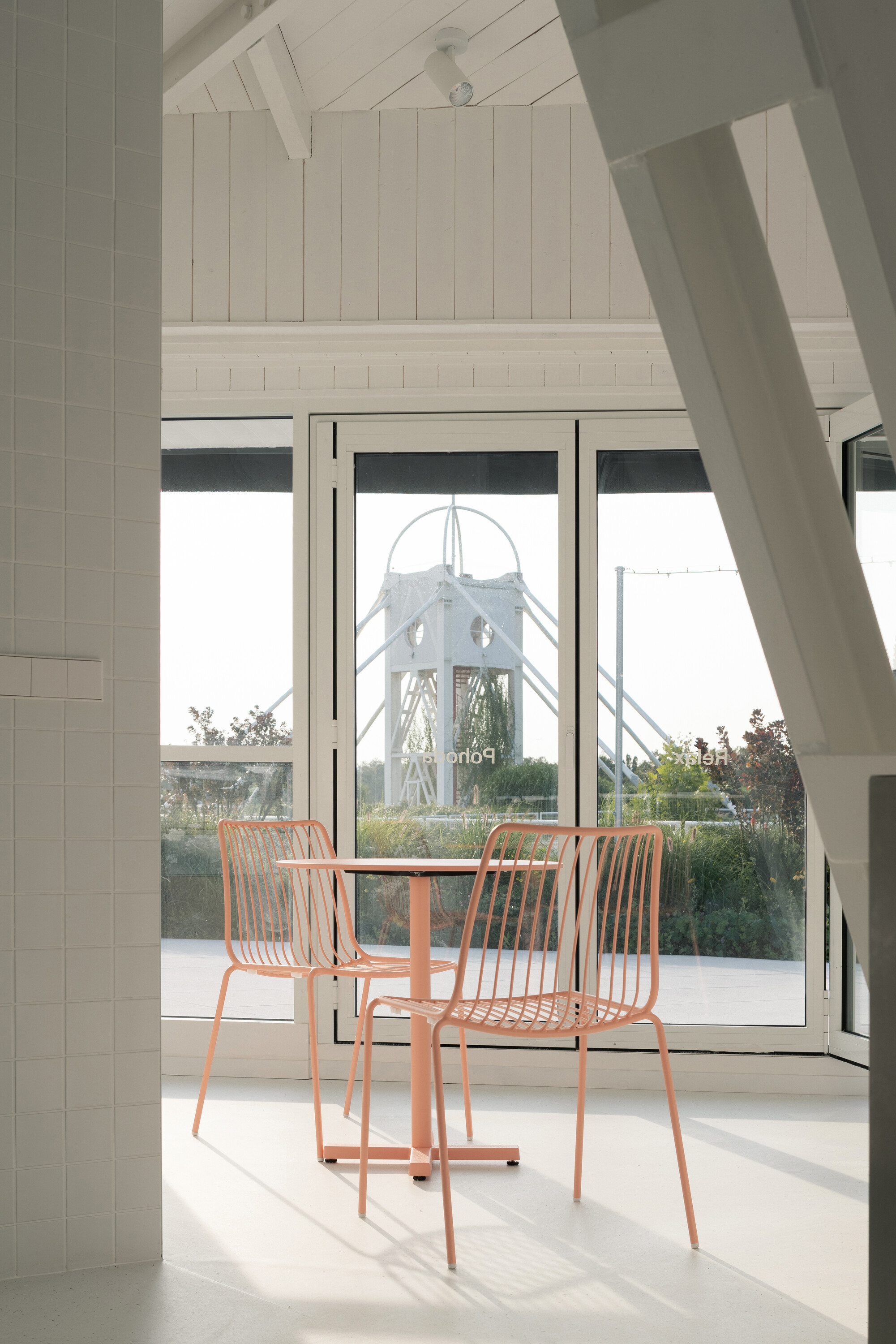

设计图纸 ▽


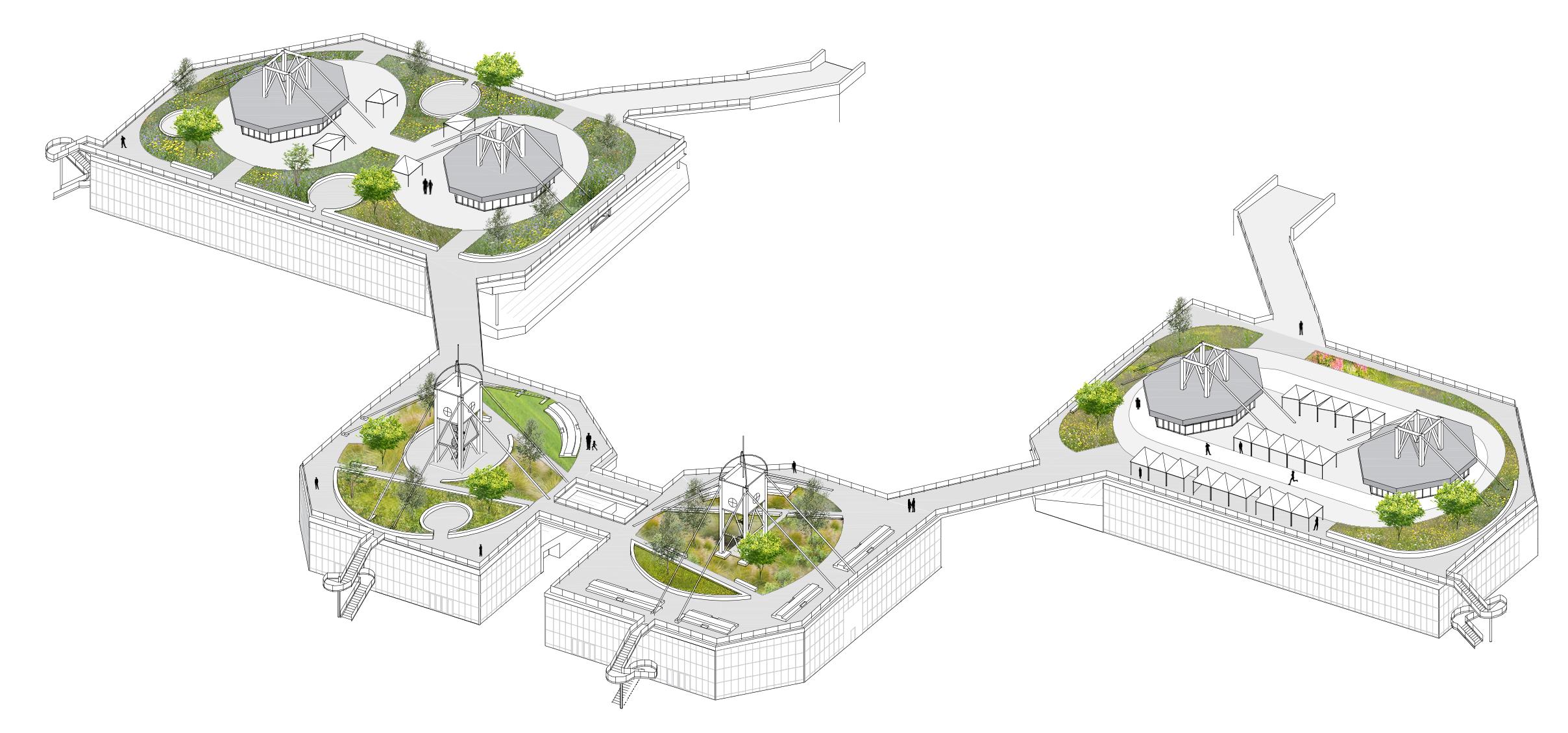
完整项目信息
Studio: Výstaviště Praha
Authors: Ondřej Píhrt, Štefan Šulek, Ondřej Laciga, Kateřina Luftová, Štěpán Tomš, Matěj Střecha, Vendulka Vaněčková, Pavel Dostal
Original building architect: Michal Brix
Project location: Výstaviště 170 00, 170 00 Prague
Project country: Czech Republic
Project year: 2019
Completion year: 2024
Plot size: 7575 m²
Client: Prague City Hall
Photographer: Alex Shoots Buildings
Collaborators and suppliers:
Landscape architect: Greenville
Structural engineer: Piada
Technical consultancy: DEKPROJEKT
Fire safety: A1 systém
EZS / EPS: Sára servis
Smoke and heat extraction: Colt International
Greenery and irrigation supply: Pražské služby
Construction of Pavilions: Konsit
Roof construction including surfaces: Tost
Products and Brands
concrete tiles: GODELMANN
terrace profiles: Accoya
EPDM surface: Vysspa
plasterboards: Rigips
steel topcoat: Jotun
flooring topcoat: BASF
topcoat: JUB
tiles: Rako
flooring: Forbo
light curtain wall: Hueck
exterior lights: Flos
automatic sliding door: ASSA ABLOY
garage door: DoorHan
sanitary partitions: Schäfer
blinds: Univers
Nolita exterior chairs, Bolt exterior tables: Pedrali
street furniture: mmcité
smart awning control: Somfy
floor outlet box: Rehau
smart lighting solution: Helvar
irrigation system: ITTEC
stainless steel mesh: Carl Stahl
buffet façade and sliding doors: Schüco
本文英文原文及图片由Výstaviště Praha授权有方发布,编译版权归有方空间所有。欢迎转发,禁止以有方编辑版本转载。
上一篇:伦敦德意志银行新总部,21 Moorfields / WilkinsonEyre
下一篇:2025密斯青年人奖青睐哪些毕业设计?17组决赛作品公布